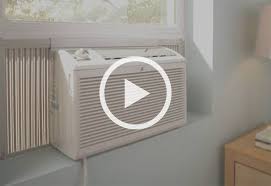4000 btu ac unit

Cool the rooms that need it the most by choosing the right amount of air conditioner BTUs Need to cool off? Cooling just one or two of your most frequently used rooms can reduce the load on your whole house unit, which may lead to lower power bills. This guide will tell you which type of air conditioner is best for your home. Tip: Take note of the voltage of your new unit. UL requires that only 115-volt models using more than 7.5 amps be connected to a standard single outlet. Models that are 208/230 volt require one of three branch circuit power supplies. Keep your home safe and do not exceed the recommended voltage or amps for your electrical circuit. Window, Freestanding, and Built-In Units Air conditioners perform three basic functions: lowering the air temperature, removing air moisture, and filtering the air. Window units are the most popular because they are affordable and easy to install. Some models can also double as a heater. Most can be installed in either a single- or double-hung window and typically come with accordion panels to ensure a secure fit.

Models designed for sliding windows require a support that can be attached to the exterior of your home. Freestanding portable air conditioners can be moved between rooms. They have a standard window venting kit for the exhaust, much like a clothes dryer is vented. Most portable units have reservoirs that need to be emptied periodically, although some come with optional hookups for a drainage hose. Other models evaporate much of the moisture as exhaust, greatly reducing the number of times you need to empty the container. Portable units can be heavy and are less efficient than newer window units. Built-in air conditioners can be installed in your wall for permanent placement and can provide both cold and hot air. They are ideal for areas of your house that may not be connected to the central heating and air system, such as a garage. Built-in wall units are more expensive than window units and they require opening a hole in an exterior wall, but they don’t take up window space and allow for a more airtight and secure fit.

Larger units may require professional installation. If you’re considering a home remodeling project or room addition, mini-split heating and cooling systems can save you the expense of installing ducts, which are necessary for most traditional HVAC systems. Mini-splits are becoming increasingly popular and are a great solution for homes without ductwork. Cooling Capacity & BTUs Choosing the right BTU, or British thermal unit, for your room size will make sure get the most energy-efficient cooling system for your home. The BTU rating is a number that essentially tells you how quickly and effectively a unit can cool a room. Ratings generally range from 5,000 BTUs to more than 20,000. A unit with too few BTUs may not be able to cool a large space efficiently, while an oversized air conditioner in a small space will cycle on and off, wasting energy and decreasing the unit's ability to adequately dehumidify the room. It’s important to consider factors such as ceiling height, room insulation, sun exposure, location and your area’s climate when choosing a unit with the right BTU rating.

All air conditioning units are labeled with their EER (Energy Efficiency Rating). Units with higher ratings offer lower greenhouse emissions and monthly electric bills.
furnace blower motor diagram EERs range from 8 to 11.5.
air conditioner trane price listThe Home Depot carries several models that are Energy Star rated.
car ac repair naples flCheck the yellow Energy Guide label on new air conditioners for more information. Before You Buy Checklist 1. Calculate your room size 2. Check your connections 3. Measure to fit Multiply the room length by the room width (in feet) to get the square footage of the area to be cooled. Check out your power source (nearby outlet) and make sure to match the unit to that outlet.

Measure the height and width of the opening and check the dimensions of the AC unit you select to be sure it will fit.« PREV: 800-1000 BTU Pentair Air Conditioners NEXT: 2000 BTU Pentair Air Conditioners » 4000 BTU Pentair Air Conditioners 28″H x 11.5″W x 14″DType 12, 3R, 4; IP 56 Internal Loop IP 34 on External Loop 500 Watts Internal Heat Waste Water Treatment Systems Security and Defense Systems 1st Year Parts and Labor, Help w/ AC Sizing Download Specification Sheet of 4000 BTU Pentair A/C R407c and R134a earth-friendly refrigerants and RoHS compliant Models for 115, 230 AC volt power input UL Listed to save customers time and money with agency approvals Outdoor model operating temperature range from -40 F/-40 C to 131 F/55 C Attractive industrial design with minimal use of visible fasteners Reliable mechanical thermostat on enclosure side of the unit. Indoor Air Conditioner models include digital display on ambient side

Galvanized sheet-metal cover for rugged factory and outdoor environments Easy-mount flanges for simple installation Cut-out adapter options for enclosures with McLean GENESIS® and T-Series air conditioners, enabling users to easily transition to the new unit Dust-resistant condenser coil allows the unit to be run filterless in most applications Cleanable, reusable aluminum mesh filter to protect coils for maximum cooling performance Mounting hardware, gaskets and user manual furnished with the unit Every unit functionally tested before shipping Standard Indoor Air Conditioner models also include: Active condensate management with heater strip Power-off relay for door switch and other system requirements Standard Outdoor Air Conditioner models also include: 500 W enclosure heater AC & DC Fan Kits Climate Control • Power Distribution • Enclosure Construction DDB Unlimited is an OEM NEMA Outdoor Cabinet Enclosure Manufacturer.